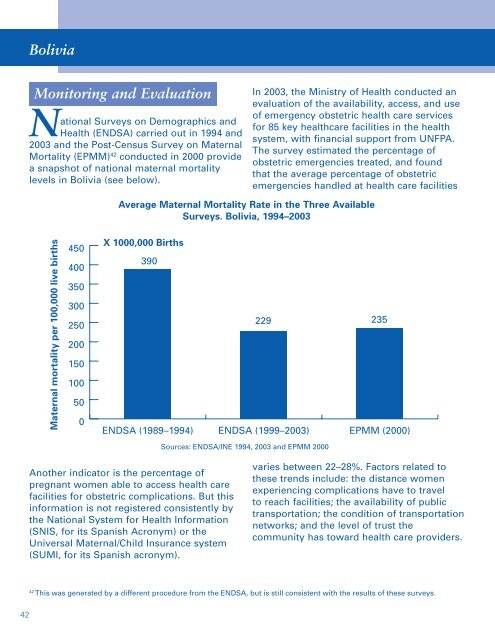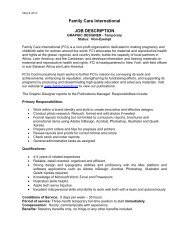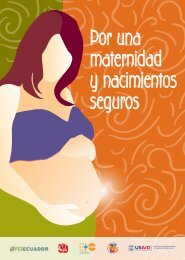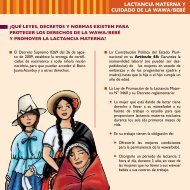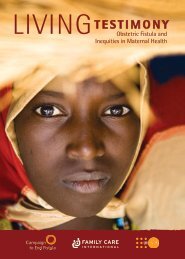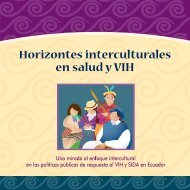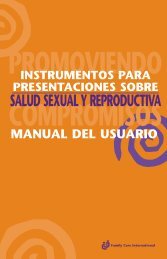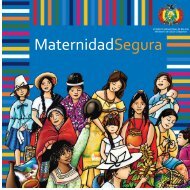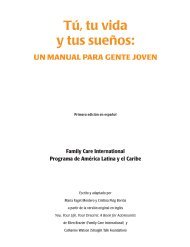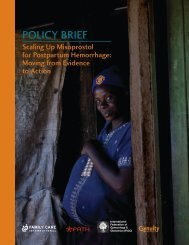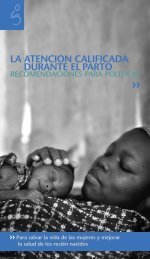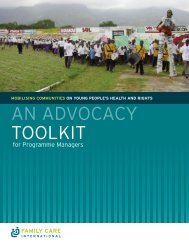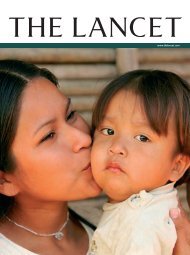Safe Motherhood: A Review - Family Care International
Safe Motherhood: A Review - Family Care International
Safe Motherhood: A Review - Family Care International
Create successful ePaper yourself
Turn your PDF publications into a flip-book with our unique Google optimized e-Paper software.
2<br />
Bolivia<br />
Monitoring and Evaluation<br />
National Surveys on Demographics and<br />
Health (ENDSA) carried out in 1994 and<br />
2003 and the Post-Census Survey on Maternal<br />
Mortality (EPMM) 42 conducted in 2000 provide<br />
a snapshot of national maternal mortality<br />
levels in Bolivia (see below).<br />
Maternal mortality per 100,000 live births<br />
450<br />
400<br />
350<br />
300<br />
250<br />
200<br />
150<br />
100<br />
50<br />
0<br />
Another indicator is the percentage of<br />
pregnant women able to access health care<br />
facilities for obstetric complications. But this<br />
information is not registered consistently by<br />
the National System for Health Information<br />
(SNIS, for its Spanish Acronym) or the<br />
Universal Maternal/Child Insurance system<br />
(SUMI, for its Spanish acronym).<br />
In 2003, the Ministry of Health conducted an<br />
evaluation of the availability, access, and use<br />
of emergency obstetric health care services<br />
for 85 key healthcare facilities in the health<br />
system, with financial support from UNFPA.<br />
The survey estimated the percentage of<br />
obstetric emergencies treated, and found<br />
that the average percentage of obstetric<br />
emergencies handled at health care facilities<br />
Average Maternal Mortality Rate in the Three Available<br />
Surveys. Bolivia, 1994–2003<br />
X 1000,000 Births<br />
390<br />
ENDSA (1989–1994)<br />
229<br />
ENDSA (1999–2003)<br />
Sources: ENDSA/INE 1994, 2003 and EPMM 2000<br />
235<br />
EPMM (2000)<br />
varies between 22–28%. Factors related to<br />
these trends include: the distance women<br />
experiencing complications have to travel<br />
to reach facilities; the availability of public<br />
transportation; the condition of transportation<br />
networks; and the level of trust the<br />
community has toward health care providers.<br />
42 This was generated by a different procedure from the ENDSA, but is still consistent with the results of these surveys.


